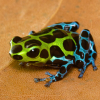I feel like there's a fair bit of discrepancy in information regarding humidity and optimal nest values.
Test tubes (correct me if I'm wrong) are evaluated to be at 95% humidity at almost all times, but for some reason ant keepers assume certain species want less than that for their actual nests. Different species are able to thrive at different humidity levels according to what everybody says but almost all species found successfully in 95% humidity conditions. While, yes, this does suggest that founding conditions closest mimicking a recent rain is optimal, why are they less than optimal outside of flight conditions?
Anecdotal but I recently flooded my novomessor nest on accident and I was worried for the brood, the queen immediately laid a huge clutch of eggs within three days.
This post very clearly shows my lack of experience and testing with humidity, so please help me understand why people shoot for certain humidity ranges for different species.



















